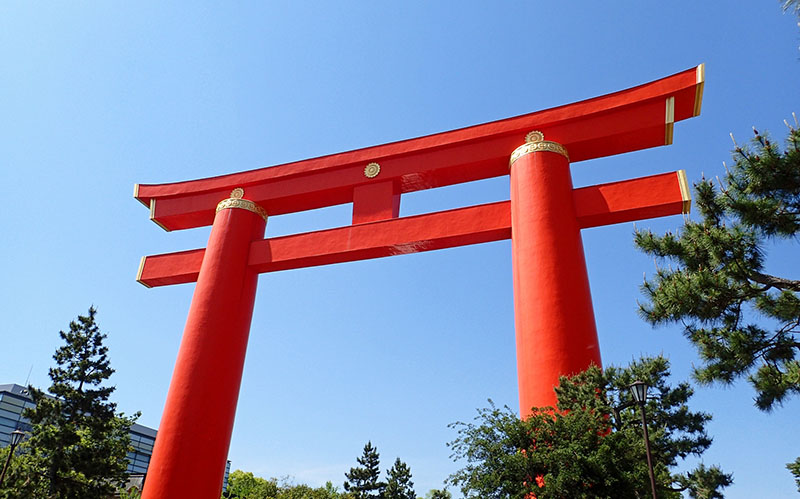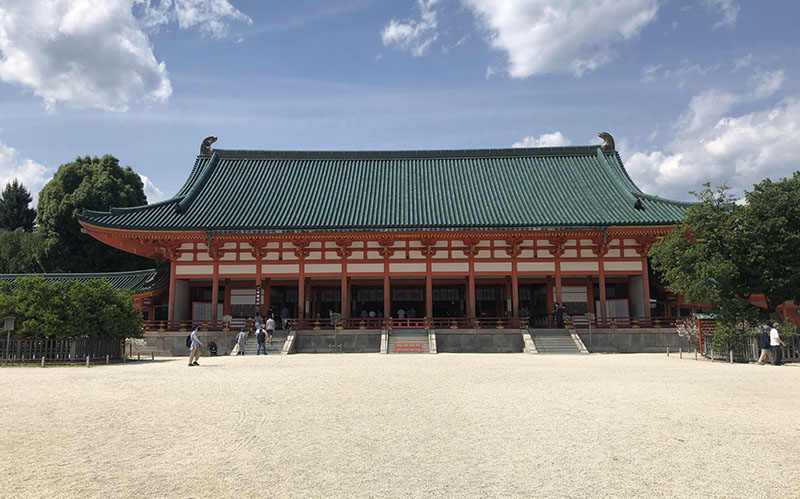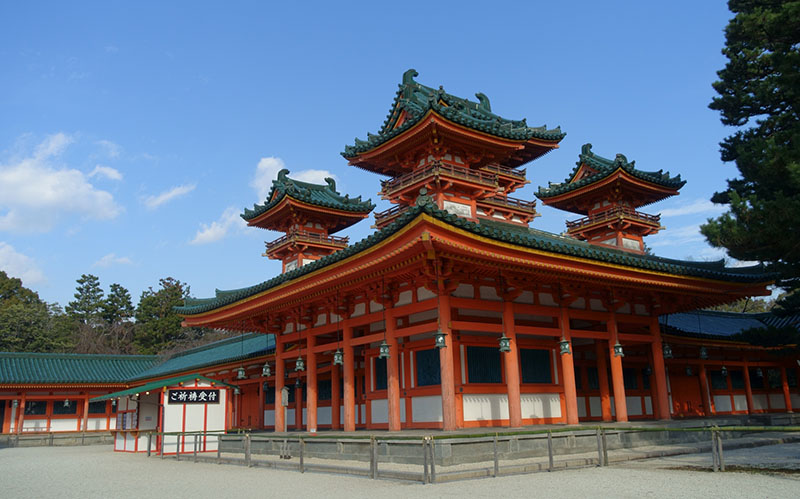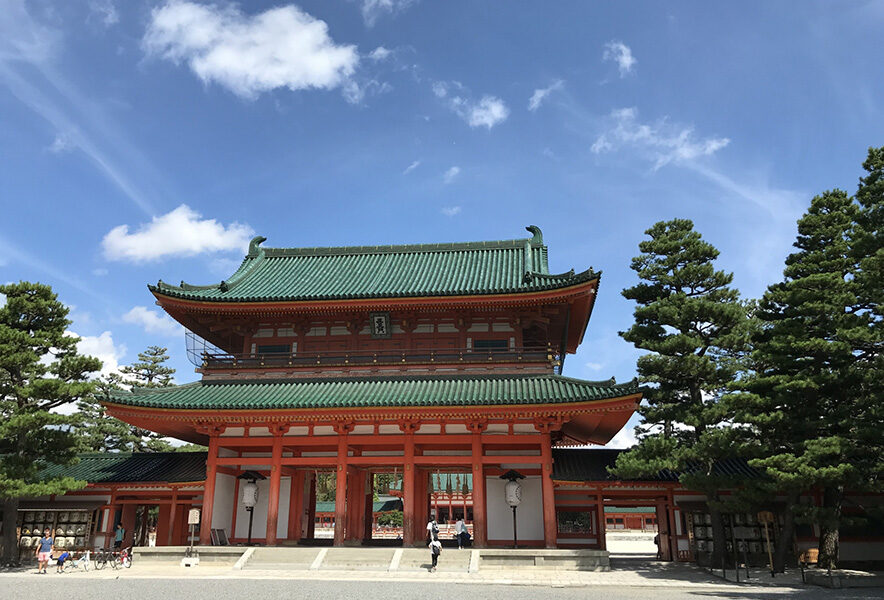- What kind of shrine is Heian Jingu Shrine? The shrine that became a symbol of Kyoto’s revival
- The precincts and shrine pavilions of Heian Shrine will be restored based on the old capital.
- The main deity of Heian Jingu Shrine is the first and last emperor at Heian-kyo.
- Access to Heian Jingu Shrine
- Parking around Heian Jingu Shrine
- Heian Jingu Shrine Official Website
- Recommended around Heian Jingu Shrine
What kind of shrine is Heian Jingu Shrine? The shrine that became a symbol of Kyoto’s revival
Heian Jingu Shrine is located in Okazaki, Sakyo-ku, Kyoto City, Kyoto Prefecture, and was founded on March 15, 1895 during the Meiji Era.
The capital of Japan flourished for about 1,000 years after the capital was moved to Heian-kyo in 794, but the capital was devastated by wars at the end of the Edo period and the transfer of the capital to Tokyo.
In 1895, 1100 years after the transfer of the capital to Tokyo, the Heian Jingu Shrine was built in response to the efforts of local and national people who wished for the restoration of the capital.
The shrine became a symbol of the restoration of the capital, and also a shrine that would pass on to future generations the prosperity of the capital for more than 1,000 years.
On March 15, 1994, the 100th anniversary of the shrine’s construction was celebrated.

The precincts and shrine pavilions of Heian Shrine will be restored based on the old capital.
The grounds and shrine pavilions are a five-eighths (1/8) scale reconstruction of the Chodoin, which was located in the Heian Palace (the Emperor’s residence, also known as “Ouchiura”) in Heian-kyo.
The Chodoin was the main government office of the Heian Palace, where state ceremonies such as accession to the throne, and other political affairs were conducted.
The restored buildings are not all of the structures of Chodoin, but the architectural style was based on that of the late Heian period (1068-1192).
When the temple was built in 1895, Taikyokuden (outer hall of worship), Otenmon (gateway to the shrine), Soryu-ro (blue dragon tower), Byakko-ro (white tiger tower), and a corridor were constructed.
Six buildings, including Taikyokuden, Soryu-ro, Byakkoro-ro, Otenmon, and two corridors (east and west), are designated as important cultural properties.

The main deity of Heian Jingu Shrine is the first and last emperor at Heian-kyo.
The main deities enshrined at Heian Shrine are Emperor Kanmu and Emperor Komei.
Emperor Kanmu was the 50th emperor and the one who moved the capital to Heian-kyo.
During his reign, he led the Emperor’s government, defeated the Emishi (through the activities of the great barbarian general Sakagami Tamuramaro), reformed Japanese Buddhism (through the patronage of Saicho and others), and compiled “Shoku-nihongi” (The Chronicles of the Five Continents).
Emperor Komei was the 121st emperor and the last emperor of Heian-kyo. He was also the father of Emperor Meiji.
His reign was in the midst of the transition from the Edo period to the Meiji period, a difficult time not only in domestic politics but also in diplomacy with the United States and Great Britain.
He established a cooperative system with the Shogunate through the Kobu Gassho (marrying off his half-sister, Kazumiya, to the 14th Shogun, Tokugawa Iemochi), but died on January 30, 1867 at the age of 36.
This was 10 months before the Great Restoration of Japan and one year before the outbreak of the Boshin War.

Access to Heian Jingu Shrine
97 Okazaki Nishitenno-cho, Sakyo-ku, Kyoto 606-8341, Japan
Parking around Heian Jingu Shrine
Heian Jingu Shrine Official Website
Official site:http://www.heianjingu.or.jp/english/english.html
